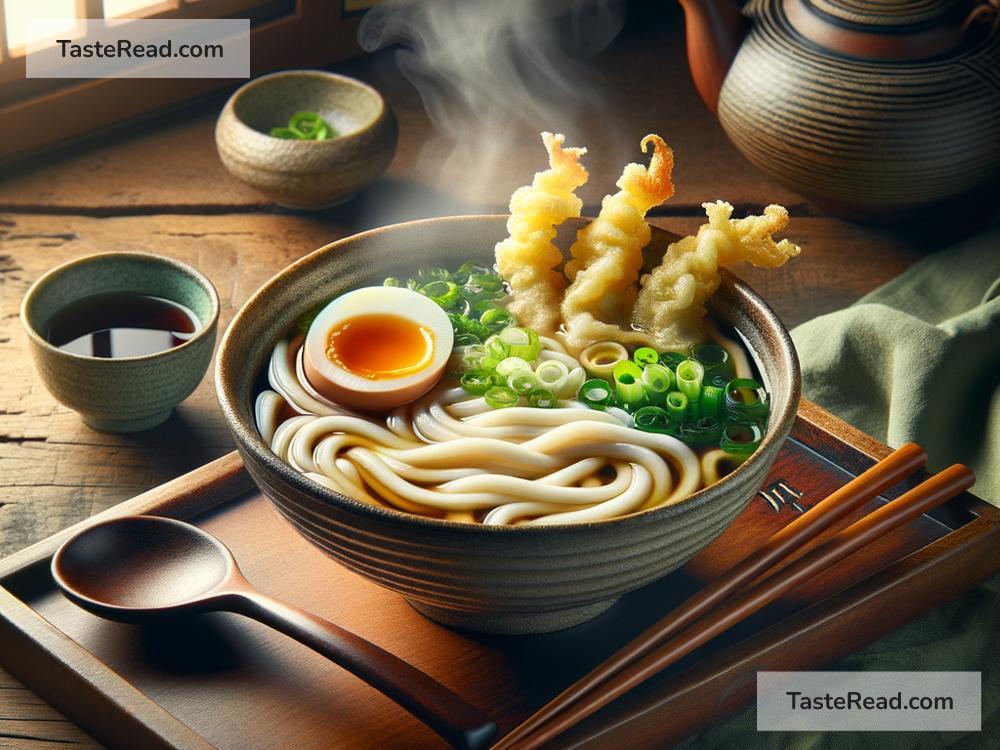The History of Japanese Udon: A Journey Through Time
Udon is one of Japan’s most beloved and iconic dishes. These thick, chewy noodles have been a comforting meal for centuries, enjoyed in various ways across the country. But how did udon come to be? The history of udon spans hundreds of years, reflecting Japan’s cultural, agricultural, and culinary evolution. Let’s dive into the fascinating story of Japanese udon, explained simply.
Udon’s Origins: Influenced by China
The history of udon begins with wheat. Wheat was an important crop introduced to Japan many centuries ago, primarily from China. Historians believe that udon was inspired by Chinese culture during the Nara period (710–794). Japanese travelers and monks visited China and saw their customs, foods, and noodles. During these travels, a type of noodle known as “mian” caught their attention. Mian refers to Chinese wheat noodles, which were popular in soups or stir-fried dishes.
When wheat noodles were brought back to Japan, ancient chefs began experimenting to create their own versions. These early noodles slowly evolved into udon. Though the original noodles were thinner, Japanese people adapted the recipe, creating the thick, hearty noodles we know today.
The Name “Udon”
The word “udon” has connections to ancient noodle-making techniques. One theory says it comes from the Japanese word “konton,” meaning “messy or mixed food.” Konton was a type of simple dumpling made from wheat flour. Over time, this name may have been shortened to “ton” and later adapted to “udon.”
Another idea is that “udon” comes from the Chinese pronunciation of “mian,” as language often changes over time when new ideas move between cultures. While the exact origin of the name remains uncertain, udon became the official term for the thick, chewy noodles Japan loves.
Udon’s Growth During the Heian Period
By the Heian period (794–1185), udon started becoming more common in Japanese households. Noodles were a luxury during this time, enjoyed by aristocrats and Buddhist monks. Wheat flour wasn’t easy to grow or process, so udon was seen as something special for important occasions or spiritual practices.
Buddhist monks played a big role in promoting udon. Noodles were served in temples to support meditation and fasting. Because udon was filling, easy to digest, and simple, it fit well into Zen philosophy, emphasizing mindfulness and balance.
Spread of Udon in the Edo Period
Udon truly became a national dish during the Edo period (1603–1868). This was a time of great cultural development in Japan. Trade and transportation flourished, making wheat more accessible. As a result, udon noodles became popular among common people.
Regional styles of udon began to emerge. Different areas in Japan developed unique ways of preparing and serving udon, depending on local ingredients and climate. For example, Kagawa Prefecture, located on the island of Shikoku, became famous for “sanuki udon.” Sanuki udon is known for its firm texture and light broth made from soy sauce and dried fish.
In other regions, rice flour was added to the mixture, or the udon was served in miso-based broths. By the end of the Edo period, udon was a staple food enjoyed across the country.
Udon in Modern Japan: A Symbol of Comfort
Today, udon continues to be an essential part of Japanese cuisine and culture. It’s incredibly versatile, served hot or cold, in broths, with dipping sauces, or even stir-fried. Across Japan, every region has its own version, adding fresh, local flavors to the dish.
Some of the most popular udon dishes include:
- Kake Udon: A simple dish where the noodles are served in hot dashi broth.
- Tempura Udon: Udon topped with crispy tempura shrimp or vegetables.
- Curry Udon: A unique fusion dish where udon is served in a thick curry sauce.
- Zaru Udon: Cold udon noodles served with a dipping sauce, perfect for hot summer days.
Udon is also cherished for its affordability and ease of preparation. It’s not only a delicious and nutritious meal but also a comforting dish for busy workers, students, or families on a rainy day.
Udon’s Cultural Importance
Beyond its role as food, udon is tied to Japanese identity. It’s a dish that bridges generations, as grandparents pass down recipes to their grandchildren, ensuring traditions remain strong. Udon has also become a popular street food, attracting locals and tourists alike at festivals and roadside stalls.
Even outside Japan, udon has gained international attention. People across the globe are enjoying these thick noodles in countless Japanese restaurants, experiencing a little taste of Japan’s culinary magic.
Conclusion: A Dish for Everyone
Japanese udon has a rich and fascinating history. From its humble beginnings inspired by Chinese noodles to its modern-day popularity, udon has proven that simple ingredients can create something extraordinary. Whether served with a steaming bowl of broth or dipped into a savory sauce, udon continues to symbolize the warmth and creativity of Japanese cuisine.
So next time you enjoy a bowl of udon, remember the centuries of history behind each bite. Udon is more than noodles—it’s a story of cultural exchange, adaptation, and love for good food. It’s a dish that connects people across time and borders, reminding us that food truly has the power to bring the world together.


